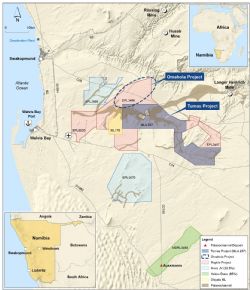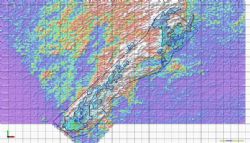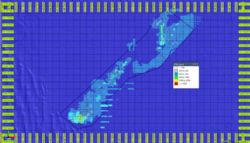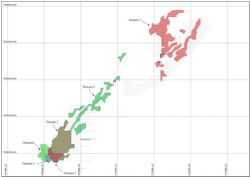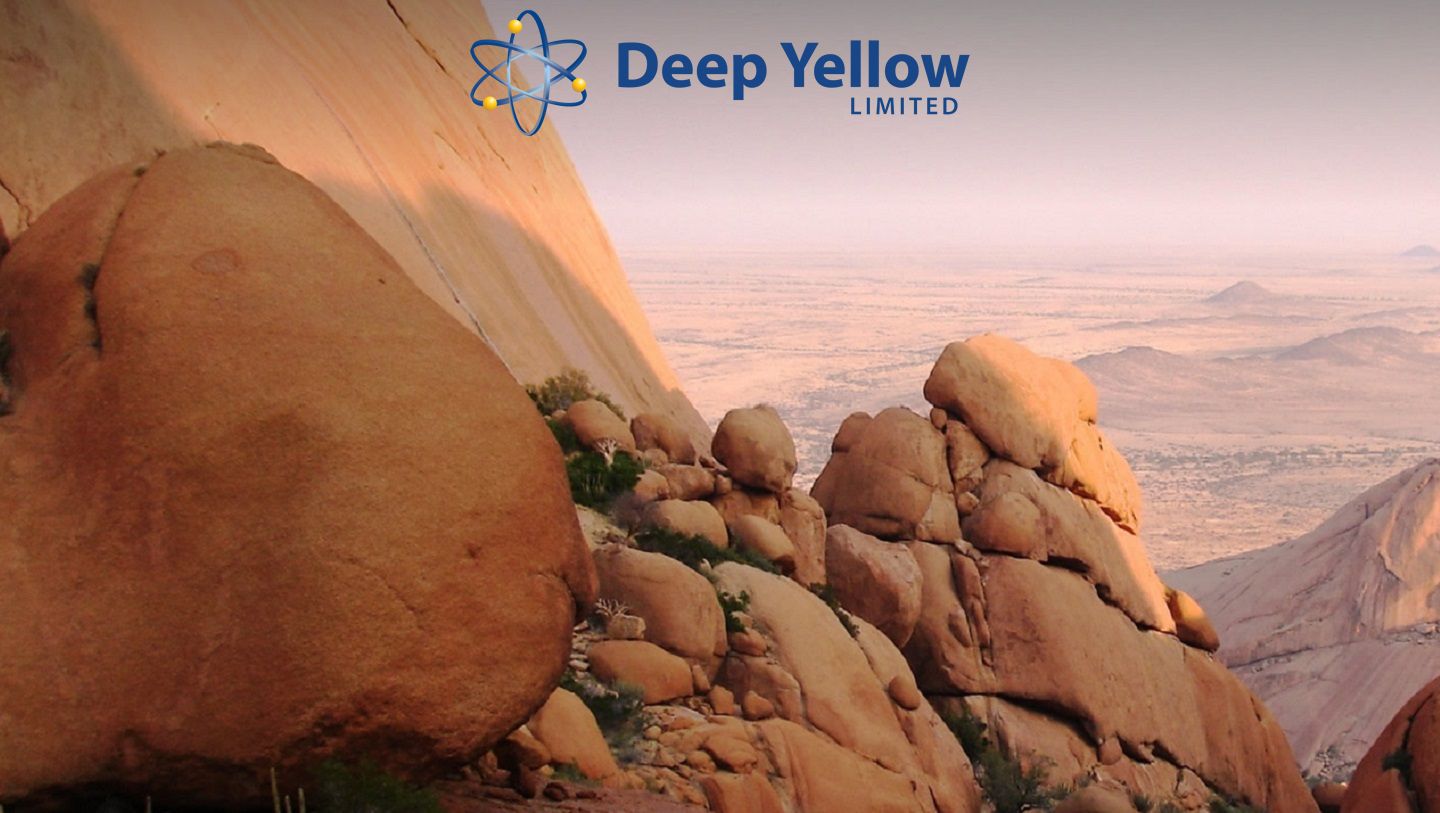
Aussinanis Project Resource Upgrade to JORC (2012)
Perth, Mar 31, 2023 AEST (ABN Newswire) - Uranium developer Deep Yellow Limited ( ASX:DYL) (
ASX:DYL) ( JMI:FRA) (
JMI:FRA) ( DYLLF:OTCMKTS) is pleased to announce an upgrade of the Mineral Resource Estimate (MRE) from JORC (2004) to JORC (2012) for the Aussinanis Project located in MDRL3498 in Namibia (Figure 1*) and only 40 km south of the Tumas 3 deposit.
DYLLF:OTCMKTS) is pleased to announce an upgrade of the Mineral Resource Estimate (MRE) from JORC (2004) to JORC (2012) for the Aussinanis Project located in MDRL3498 in Namibia (Figure 1*) and only 40 km south of the Tumas 3 deposit.
HIGHLIGHTS
- Exploration completed between 2007-2014 at the Aussinanis Project established an Indicated and Inferred Resource base of 18Mlb at 237ppm U3O8 with a 150ppm U3O8 cut off and at the time was reported as JORC (2004)
- A thorough review of the Aussinanis resource base found the underlying data and previous Mineral Resource Estimate (MRE) sound and of sufficient quality to upgrade the identified resources to JORC (2012) classification
- The upgraded MRE is reported at a 100ppm U3O8 cut off and contains an Indicated and Inferred Resource base of 28.1Mlb at 171ppm U3O8
o At a 150ppm cut-off the upgraded MRE stands at 16.5Mlb U3O8 at 242ppm
The deposit is held in the Yellow Dune Joint Venture by Deep Yellow, with 85% held through the Company's wholly owned subsidiary Reptile Uranium Namibia (Pty) Ltd (RUN), 5% through Epangelo Mining Company (Pty) Ltd (EMC) and 10% through Oponona Investments (Pty) Ltd (OI).
The updated JORC (2012) MRE contains an Indicated and Inferred Mineral Resource base of 28.1Mlb U3O8 at 171ppm, using a 100ppm U3O8 cut off. At a 150ppm cut-off the deposit contains 16.5Mlb U3O8 at 242ppm.
The flagship Tumas Project continues to be the priority focus for Deep Yellow, with the Definitive Feasibility Study (DFS) finalised in January 2023 and submission of a Mining Licence Application in 2022; which was awarded a preparedness to grant by the Ministry of Mines and Energy (MME), pending completion of Environment Impact Assessment (EIA) and subsequent issuing of the Environmental Clearance Certificate (ECC) by the Ministry of Environment, Forestry and Tourism (MEFT). The EIA has been submitted and a ECC is expected to be issued in H2 2023.
AUSSINANIS PROJECT
Aussinanis (Figure 1, Table 1*) had, under its previously reported MRE, an Indicated and Inferred Mineral Resource base of 18Mlb U3O8 at 237ppm (at a 150ppm cut off) conforming to the JORC (2004) Code. Mineralisation occurs from a depth of 4m to 31m, averaging 11m below surface.
The MRE has now been upgraded to the JORC (2012) Code reporting standard and at a 100ppm U3O8 cut-off, contains an Indicated and Inferred Resource base of 28.1Mlb U3O8 at 171ppm., to conform with the cut off adopted for the Tumas Deposit to the north (see Figure 1*).
As part of the resource revision, the current MRE of the Aussinanis Project was extensively reviewed by Mr Martin Hirsch, Deep Yellow's in-house mineral resource geologist who qualifies as a competent person under the JORC (2012) code. Mr Hirsch has verified the information available, in terms of geological understanding and drilling data validity to reclassify the MRE for the whole of the Aussinanis deposit under the JORC (2012) Code.
Aussinanis mineralisation occurs as secondary carnotite enrichment of variably calcretised palaeochannel and sheet wash sediments and adjacent weathered bedrock, within a northeast trending zone approximately 29km in length.
The mineralisation is confined to continuous zones above a nominal 50ppm U3O8 cut-off grade, with the mineralisation being overlain by an average thickness of 1.7m of poorly mineralised material. Mineralised domain thicknesses range from 1 to 19m, with an average of approximately 4.4m.
Results of Historic Data and MRE Review
A comprehensive review of existing data and the MREs indicates that the data quantity and quality of the available information, in terms of geological understanding, drilling data, grade and density determinations and quality control thereof, is sufficient to confidently estimate mineral resources for the deposit detailed in this technical report. The reliability of grades derived from RUN's drilling and downhole gamma logging can be assessed by comparing them to available assay data. In general, the assays available are backed up using incorporated certified standards and duplicates. Where assays were performed at the RUN owned and operated laboratory in Swakopmund these have been validated by comparison to external independent assay laboratories. It should be noted that equivalent uranium values (eU3O8) derived from deconvolving down hole gamma logging values are used to determine the U3O8 grades for the determination of the MRE and that assays are used primarily to validate downhole gamma derived results.
The mineral resources outlined have been estimated using a variety of techniques which are regarded as being appropriate for the deposit being estimated. Table 1 lists the detailed results of the previous MRE.
*To view the full report with tables and figures, please visit:
https://abnnewswire.net/lnk/I9R11V0P
About Deep Yellow Limited
 Deep Yellow Limited (ASX:DYL) (OTCMKTS:DYLLF) is successfully progressing a dual-pillar growth strategy to establish a globally diversified, Tier-1 uranium company to produce 10+Mlb p.a.
Deep Yellow Limited (ASX:DYL) (OTCMKTS:DYLLF) is successfully progressing a dual-pillar growth strategy to establish a globally diversified, Tier-1 uranium company to produce 10+Mlb p.a.
The Company's portfolio contains the largest uranium resource base of any ASX-listed company and its projects provide geographic and development diversity. Deep Yellow is the only ASX company with two advanced projects - flagship Tumas, Namibia (Final Investment Decision expected in 1H/CY24) and MRP, Western Australia (advancing through revised DFS), both located in Tier-1 uranium jurisdictions.
Deep Yellow is well-positioned for further growth through development of its highly prospective exploration portfolio - ARP, Northern Territory and Omahola, Namibia with ongoing M&A focused on high-quality assets should opportunities arise that best fit the Company's strategy.
Led by a best-in-class team, who are proven uranium mine builders and operators, the Company is advancing its growth strategy at a time when the need for nuclear energy is becoming the only viable option in the mid-to-long term to provide baseload power supply and achieve zero emission targets.
Importantly, Deep Yellow is on track to becoming a reliable and long-term uranium producer, able to provide production optionality, security of supply and geographic diversity.
| ||
|



